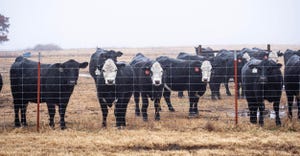Waters of the U.S. maps cause concern 7445
Newly released maps show vast magnitude of expansion of EPA's jurisdiction under proposed waters of the U.S. rule. Jacqui Fatka

The scope of the Environmental Protection Agency’s plan to increase its footprint of regulating waters of the U.S. came under fire as maps were released by the agency which showed an astonishing number of potential waterways that could come under EPA’s jurisdiction in its latest proposed rule.
The House Committee on Science, Space, and Technology released maps of waters and wetlands the EPA has to-date refrained from making public. After multiple requests, the Agency finally handed over the maps to the committee.
Knowledge of the maps came as the Committee was doing research in preparation for a hearing regarding the proposed “Waters of the United States” rule. The maps were kept hidden while the agencies marched forward with rulemaking that fundamentally re-defines private property rights, said Smith.
Answering the criticisms, Tom Reynolds EPA associate administrator of the Office of External Affairs and Environmental Education, explained the maps were originally created in 2005 during the previous administration to understand the potential impact of Supreme Court decisions on the nation’s water resources. The maps were revised last year with updated data from the U.S. Geological Survey, the scientific agency for cataloguing the nation’s natural resources.
“Simply put, these maps do not show the scope of waters historically covered under the Clean Water Act or proposed to be covered under EPA’s proposed rule. These maps show generally the location of many streams, wetlands, rivers, lakes and other water bodies. They serve as a tool for visualizing how water flows across our nation and in regions of the country,” he said.
Reynolds said EPA “has never and is not now relying on maps to determine jurisdiction under the Clean Water Act.” Rather the Army Corps of Engineers determines jurisdiction using detailed site specific information in response to requests. “EPA’s proposal will not fully eliminate the need for these efforts, but it can reduce leg work, saving time and money by using science – not maps – to more clearly define the waters that are most important to protect.”
Reynolds promised that while these maps are useful tools for water resource managers, “they cannot be used to determine Clean Water Act jurisdiction – now or ever.”
These maps are very similar to the maps produced by agricultural groups. These maps show individual states facing upwards of 100,000 additional stream miles that could be regulated under the proposed regulation.
“Given the astonishing picture they paint, I understand the EPA’s desire to minimize the importance of these maps,” said Rep. Lamar Smith (R., Texas), chairman of the House Science Committee, in a letter to EPA administrator Gina McCarthy. “But EPA’s posturing cannot explain away the alarming content of these documents. While you claim that EPA has not yet used these maps to regulate Americans, you provided no explanation for why the Agency used taxpayer resources to have these materials created.”
“This is the smoking gun for agriculture,” said Ashley McDonald, National Cattlemen’s Beef Assn. environmental counsel. “These maps show that EPA knew exactly what they were doing and knew exactly how expansive their proposal was before they published it.”
Sen. Mike Johanns (R., Neb.) shared that the perception of EPA in the countryside is that they’re “an enemy of agriculture. EPA will “pay lip service to you, but doesn’t change anything and continue to march on down the road with more regulations.” Johanns said the waters of the U.S. rule is a perfect example of how EPA pushes its regulatory agenda without taking into account the economic and real-life impacts.
About the Author(s)
You May Also Like




.png?width=300&auto=webp&quality=80&disable=upscale)
